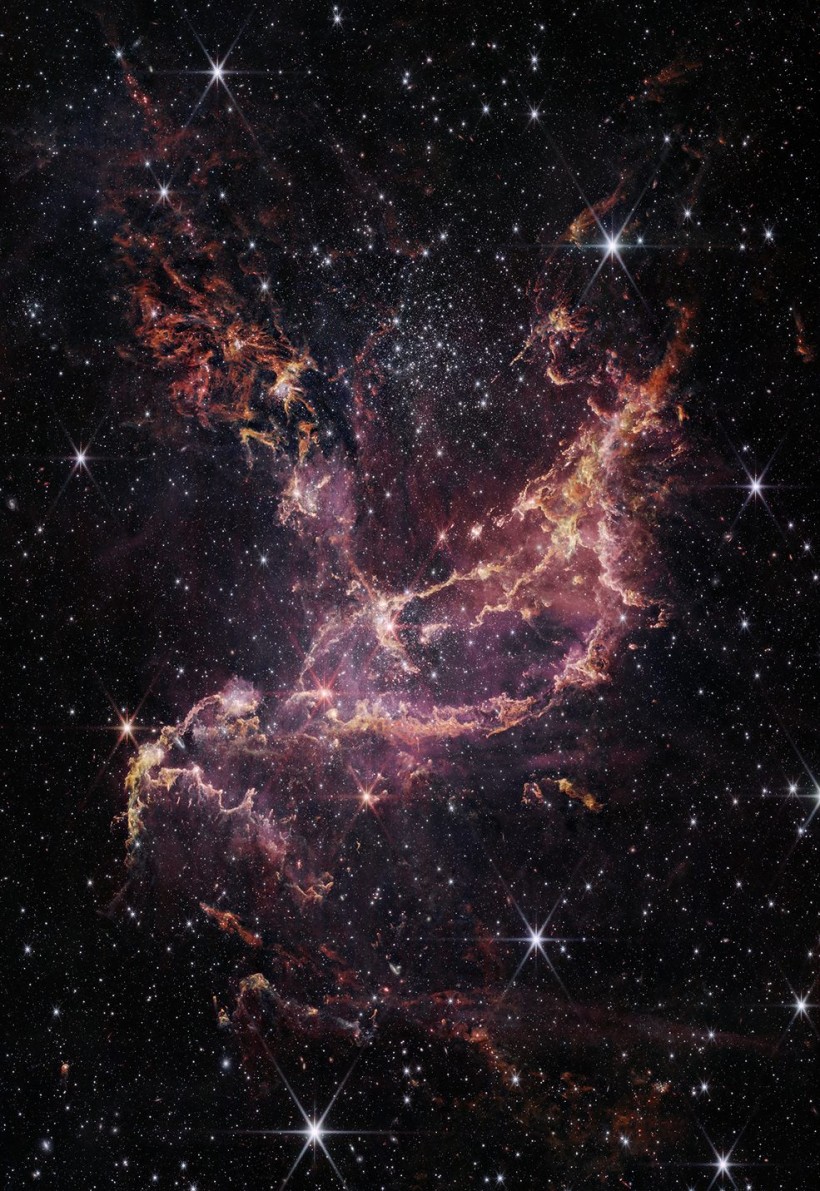NASA has produced stunning images that could be mistaken for artworks by combining photos from the James Webb Space Telescope (JWST) and the Chandra X-ray Observatory.
These images showcase the beauty of two galaxies, a nebula, and a star cluster, allowing us to witness the full splendor of these cosmic wonders. According to NASA, when multiple telescopes from the agency observe the same region of the universe, they unveil their true colors.

NGC 346, shown here in this image from NASA’s James Webb Space Telescope Near-Infrared Camera (NIRCam). Image processing: A. Pagan (STScI), N. Habel (USRA), L. Lenkic (USRA) and L. Chu (NASA/Ames)
Capturing Cosmic Wonders
NASA utilized the JWST and the Chandra X-ray Observatory to generate the composite images. These composite images blend X-ray data from Chandra and infrared data from earlier Webb images, both of which are beyond the range of human perception.
Additionally, NASA incorporated data from other telescopes such as the Hubble Space Telescope (optical), the retired Spitzer Space Telescope (infrared), the European Space Agency's XMM-Newton (X-ray), and the European Southern Observatory's New Technology Telescope (optical).
NASA has captured some of its most stunning and awe-inspiring images to date, showcasing the NGC 346 star cluster, the NGC 1672 spiral galaxy, the M16 Eagle Nebula, and the M74 spiral galaxy.
READ ALSO: James Webb Space Telescope Captures the Messy Death of Multiple Stellar Systems, Unfolds Truths about Planetary Nebula
NGC 346
NGC 346, situated in the Small Magellanic Cloud and located roughly 200,000 light years away, is a star cluster. MailOnline reported that the JWST has captured images of this cluster, revealing the presence of gas and dust formations like plumes and arcs. These structures serve as building blocks for the formation of stars and planets.
On the other hand, the purple cloud visible on the left side of the images, observed with the Chandra telescope, represents the remnants of a supernova explosion caused by a massive star. Furthermore, the Chandra data provides insights into the existence of young, hot, and massive stars that emit powerful winds from their surfaces, as stated by NASA.
NGC 1672
NGC 1672 is classified as a "barred" spiral galaxy by NASA. In these types of galaxies, the arms near their centers form a straight band of stars that encloses the core, unlike other spiral galaxies where the arms twist to the core. Chandra's observations of NGC 1672 have uncovered compact objects such as neutron stars and black holes, along with remnants of exploded stars.
Additionally, data from the Hubble Space Telescope and the James Webb Space Telescope was utilized to enhance the depiction of the spiral arms, including the presence of dust and gas.
M16 (Eagle Nebula)
The Eagle Nebula, which NASA also calls Messier 16, is a renowned celestial area often called the "Pillars of Creation." In the image captured by the Webb telescope, the presence of dark columns made up of gas and dust can be observed, enveloping the newly emerging stars that are still in their early stages of formation.
Meanwhile, the Chandra sources, depicted as dot-like features, represent young stars emitting abundant X-ray emissions. The colors in the image represent X-rays (red and blue) and infrared (red, green, and blue) wavelengths.
M74
According to Phys.org, Messier 74 resembles Milky Way in that it is a spiral galaxy that appears face-on to Earth. Located approximately 32 million light-years away, it is known as the Phantom Galaxy due to its relatively faint nature, making it more challenging to observe with smaller telescopes compared to other galaxies in Charles Messier's renowned catalog.
The James Webb Space Telescope reveals the presence of gas and dust in the infrared spectrum, while Chandra data highlights energetic activity from stars in X-ray wavelengths. Additional stars and dust within the dust lanes are showcased by optical data from the Hubble telescope. The colors in the image represent X-ray (purple), optical (orange, cyan, blue), and infrared (green, yellow, red, magenta) wavelengths.
RELATED ARTICLE: President Joe Biden Unveils First NASA James Webb Space Telescope Image Showing the Universe, Stars and More; When to See Other Space Photos?
Check out more news and information on Space in Science Times.














